As humans, we all have degrees of needs. Some are essential to survival, for example physiological needs such as shelter and food. Others are more social, emotional, spiritural or psychological. Maslow’s Hierarchy of Needs is a framework that will help you build scenes where your characters’ needs propel the action. Keep reading for a complete guide to Plottr’s Maslow’s Hierarchy of Needs Scene Template.
What is the Maslow’s Hierarchy of Needs Scene Template?
Named after one of the 20th Century’s best-known psychologists, Abraham Maslow, Maslow’s Hierarchy of Needs offers us many ways to introduce inner conflict for our characters.
Maslow developed influential ideas about how humans develop their individual identities. He believed people could only fully self-actualize and achieve their goals if their more basic needs were first met.
Maslow’s Hierarchy of Needs has five levels. Depicted in a pyramid shape, the hierarchy begins with the lower level, which encompasses physiological needs like food. It ultimately rises up to the highest level, which is self-actualization.
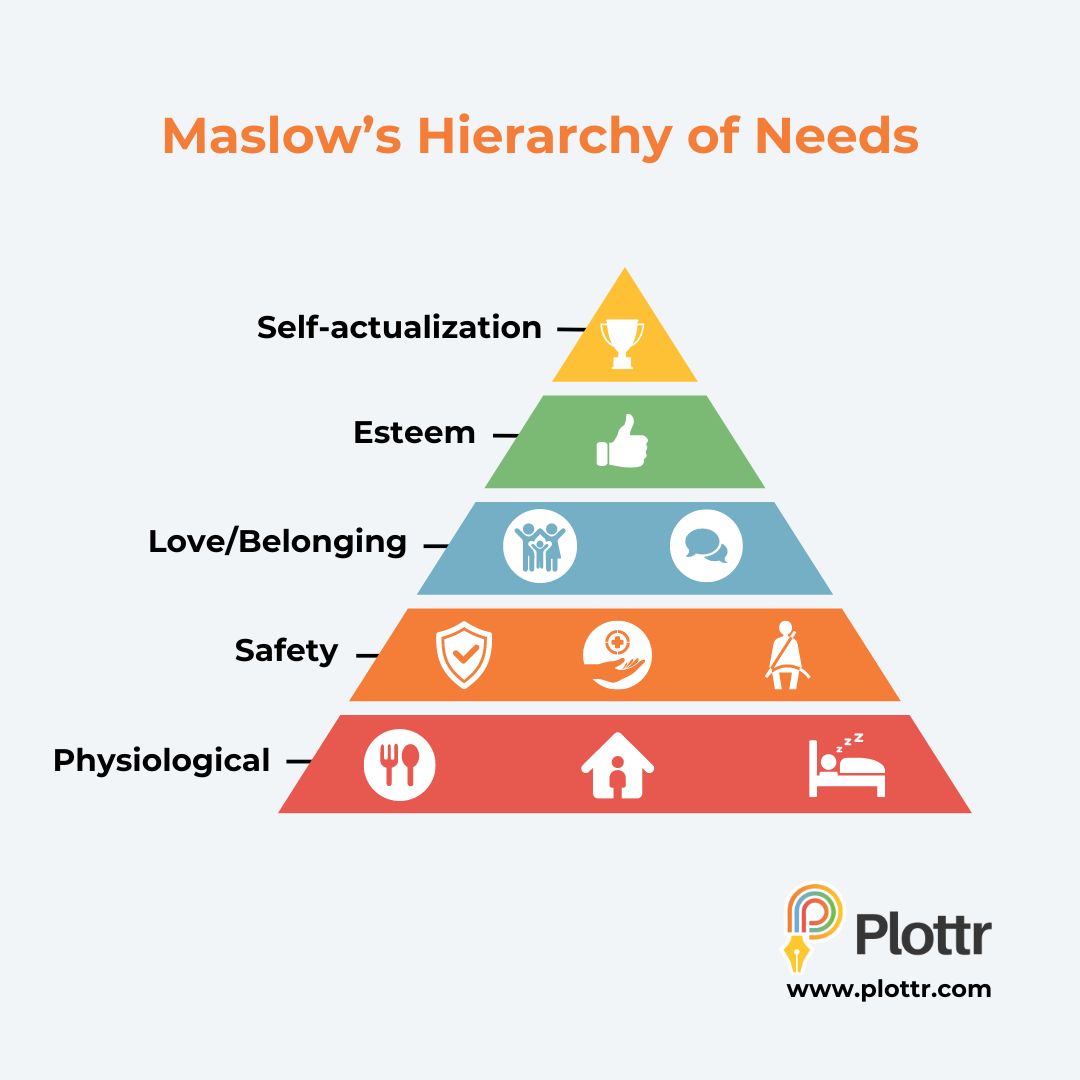
The core idea is that, until lower levels of needs are met, a person can’t advance to the next level. For example, someone who doesn’t first feel safe and secure (their level 2 needs) may struggle to build meaningful, loving relationships with others (which constitute level 3 needs).
4 Ways to Use the Maslow’s Hierarchy of Needs Scene Template in Plottr
So why should you create scenes using Maslow’s Hierarchy of Needs? Here are a few ways this framework will help you improve your story:
Create Instant Conflict Due to Characters’ Differences
If one character holds great esteem (level two in Maslow’s Hierarchy of Needs) but their antagonist is struggling to put food on the table (or vice versa), you may have built-in conflict. How might the characters’ differences in position impact how they see and interact with each other?
Create Characters with Room to Grow
Maybe you have a character who starts from rock bottom in a classic ‘rags to riches story’. Perhaps your protagonist suddenly became homeless due to a house fire or other disaster; regressing in Maslow’s Hierarchy of Needs. Building scenes around which needs are being met (and which aren’t being met) leaves room to grow.
Imagine Believable Heroes and Villains
If you can imagine where your antagonist is on Maslow’s Hierarchy of Needs and see where she needs to go, you’ll better understand her motivations. This will help you wrote a more believable, three-dimensional character. The same goes for creating believable heroines.
Create Stronger Introductions and Climaxes
Maslow’s Hierarchy of Needs is useful for creating introductory and climatic scenes in sci-fi, fantasy, mysteries, thrillers, and suspense books. It gives you a way to frame key scenes, setting up characters’ present realities and the needs they want met.
This framework gives us a blueprint to grow our characters internally, while also giving us multiple levels of ideas for conflict around simple and advanced needs.
Are you a plotter? Use the Maslow’s Hierarchy of Needs Scene Template in Plottr to plan desire-driven scenes throughout your book.
If you’re a pantser instead, dip into the template when you need to do a little brainstorming as you draft. You can even add this template to other scenes when revising to deepen your characters’ interactions and psychologies.
Explore the Maslow’s Hierarchy of Needs Scene Template in Plottr
The Maslow’s Hierarchy of Needs scene template in Plottr allows you to layer internal and external conflict throughout a scene or beat by asking questions about each level in the pyramid of needs.
Here are the parts of the Maslow’s Hierarchy of Needs template in Plottr:
- Physiological Needs/Level 1: How are the character’s biological needs for survival being met in this scene? (e.g. food, shelter, clothing, sex)
- Safety Needs/Level 2: How is the character’s need for safety and security being met in this scene? (e.g. financially, emotionally, socially)
- Love and Belongingness Needs/Level 3: How is the character’s need for belonging being met in this scene? (e.g. friendship, trust, acceptance, love)
- Esteem Needs/Level 4: How is the character’s need for self-esteem and respect from others being met in this scene? (e.g. status, prestige)
- Self-Actualization Needs/Level 5: How is the character’s need for self-fulfillment being met in this scene? (e.g. achieving one’s full potential)
Plot Analysis Using the Maslow’s Hierarchy Scene Template
Ready to see an example of how this is done? Let’s examine the 2000 film Castaway, starring Tom Hanks as FedEx executive Chuck Noland.
At the beginning of the film, Noland is an obsessively punctual person en route to an assignment when his plane crashes in the Pacific Ocean during a storm. As the sole survivor, he washes up on a deserted island.
- Physiological Needs/Level 1: Noland has been stripped down to his basic needs on the deserted island. He has to figure out how to build shelter, fashion clothing, and continually find food to eat to stay alive
- Safety Needs/Level 2: Once Noland realizes he can survive on the island, he’s able to turn his attention to his other needs in subsequent scenes
- Love and Belongingness Needs/Level 3: Having achieved a certain amount of security and physical sustenance, Noland becomes lonely quite quickly. To meet this crucial need for companionship on the island, Noland creates “Wilson” from a volleyball that washes up with other plane wreckage on the beach. Noland treats Wilson as a friend and has extended conversations with him
- Esteem Needs/Level 4: Conversing with Wilson allows Noland to advance to the esteem level. He becomes confident in his ability to survive (and even sometimes thrive) in extraordinarily difficult circumstances
- Self-Actualization Needs/Level 5: As the lone survivor of the crash, and an independent man whose life has been stripped down to the very basics, Noland realizes how shallow his earlier life had been. When he ends up rescued years later and returns to civilized life, he makes different choices as to how he wants to live
Looking at this story through this lens, how do you see Noland’s character develop throughout the story? How — and how well — does he achieve each level by the end?
How to Use the Maslow’s Hierarchy of Needs Scene Template in Plottr
If this sounds like a helpful device for building your own scenes and stories, you’re in luck. Start writing need-driven scenes with a free 30-day trial of Plottr, or purchase a plan to get going.
Once you have Plottr setup on your computer, just follow these five steps to add the Maslow’s Hierarchy of Needs template to any scene card:
- Step 1: Open Plottr and start a new project (or open an existing one)
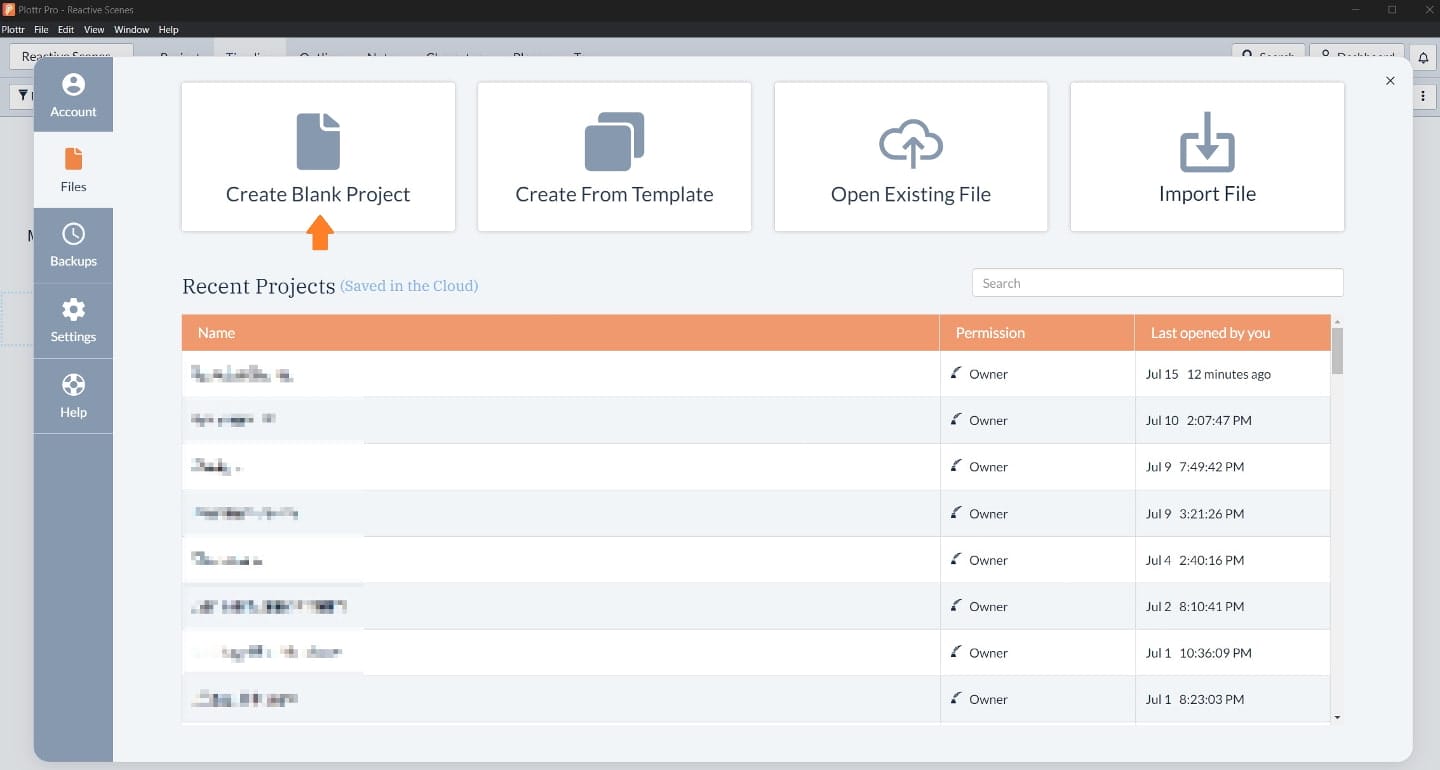
- Step 2: Hover over the plotline where you want to add a scene card and click Use Template in the box that appears
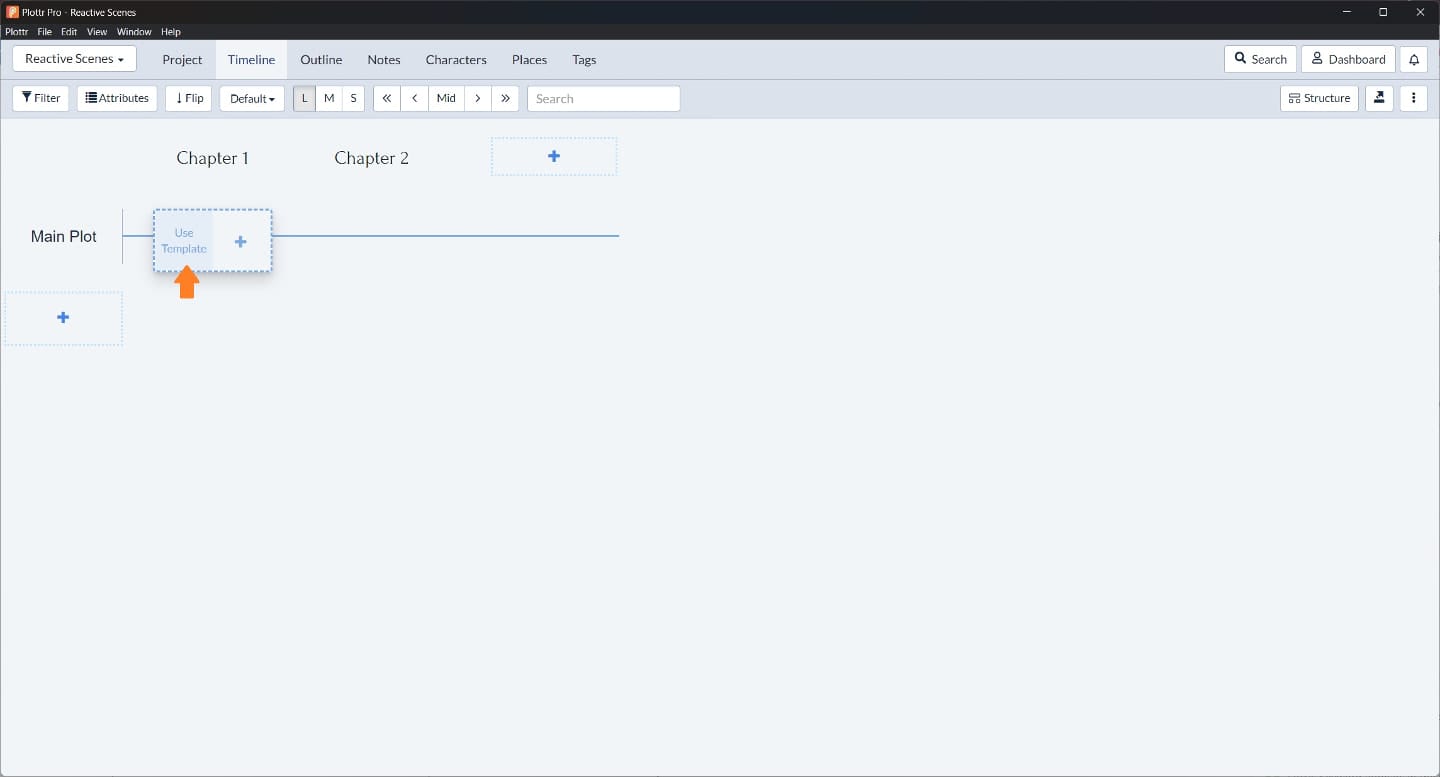
- Step 3: Select Maslow’s Hierarchy of Needs from the list of scene templates and click Choose to add it to your scene card
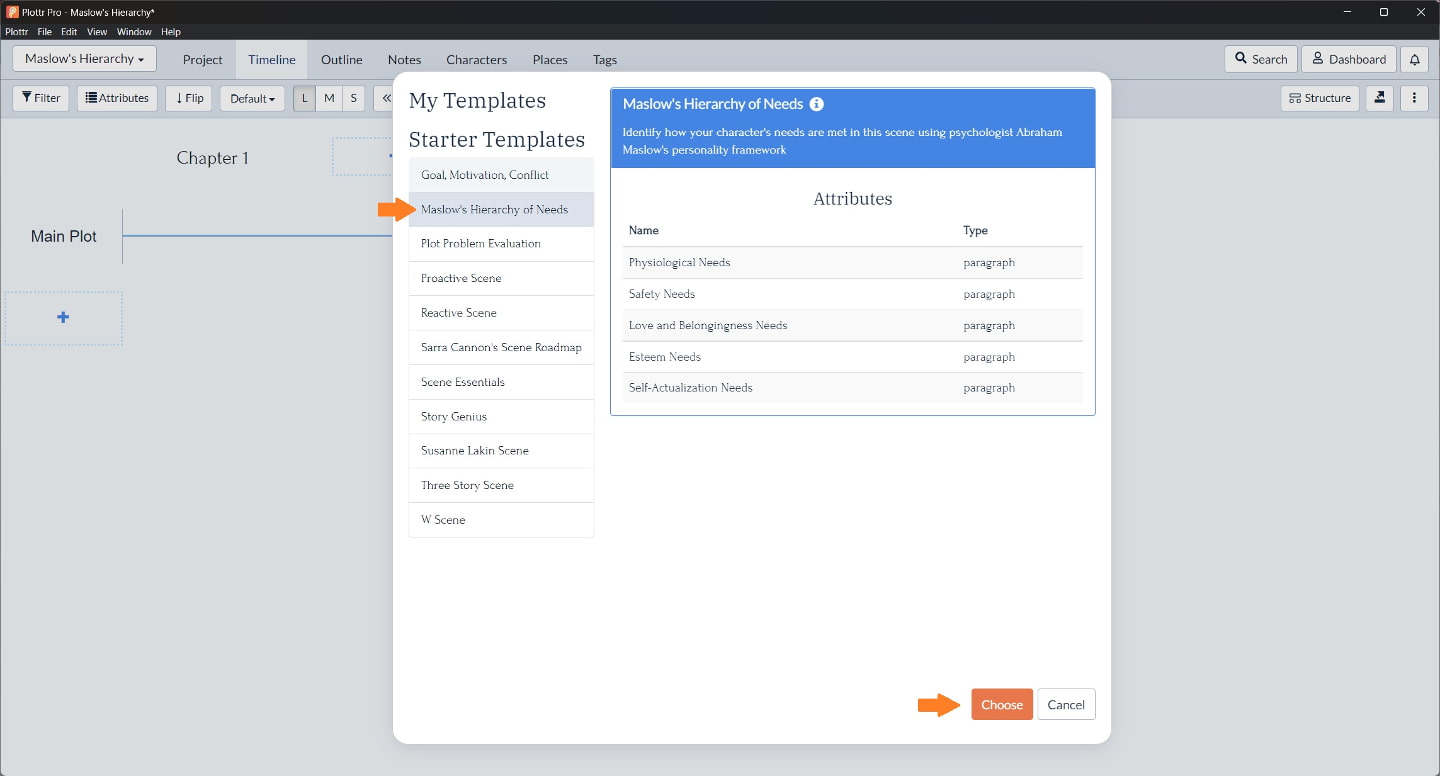
- Step 4: Name the Scene Card and press Enter to save it
- Step 5: Open the card and start filling out the template!
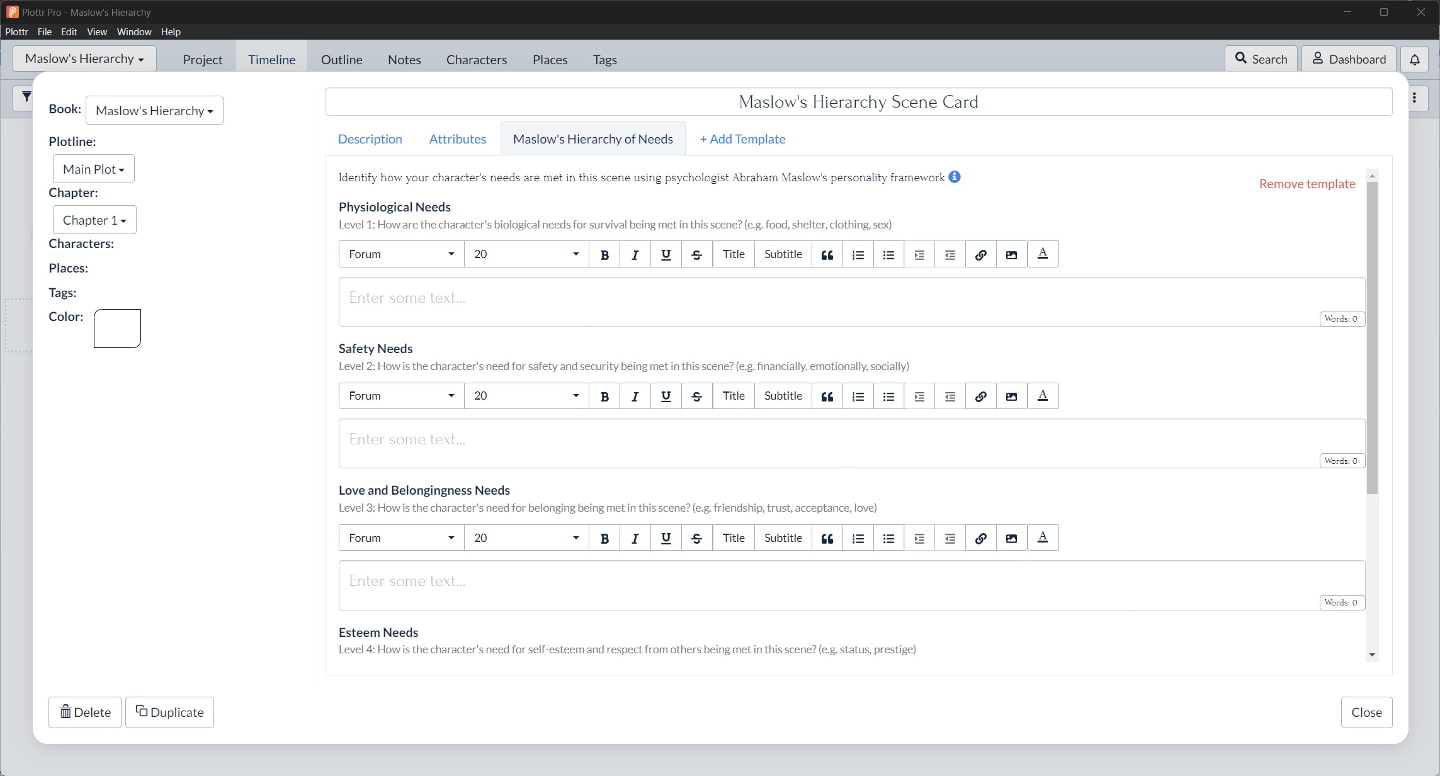
You can also add a template to an existing scene card by clicking the +Add Template button within the scene card — much like you would for a character profile. Try this template together with these others:
As you write, think of your characters as climbing the pyramid of Maslow’s Hierarchy of Needs. Some will start out on higher levels, but may be knocked down to lower levels due to the events of your story.
Others will remain stagnant on a given level, never moving up or down. Some will advance to the highest level of self-actualization (and, perhaps, their own version of happily-ever-after).
Start Building to the Apex of a Compelling Story
If you’re ready to get started using the Maslow’s Hierarchy of Needs scene template in Plottr, sign up for a free trial or purchase Plottr today and see how the Maslow’s Hierarchy of Needs scene template will help you create complex and believable character arcs.
Which is your favorite Plottr template or plot structure? Let us know in the comment section below.

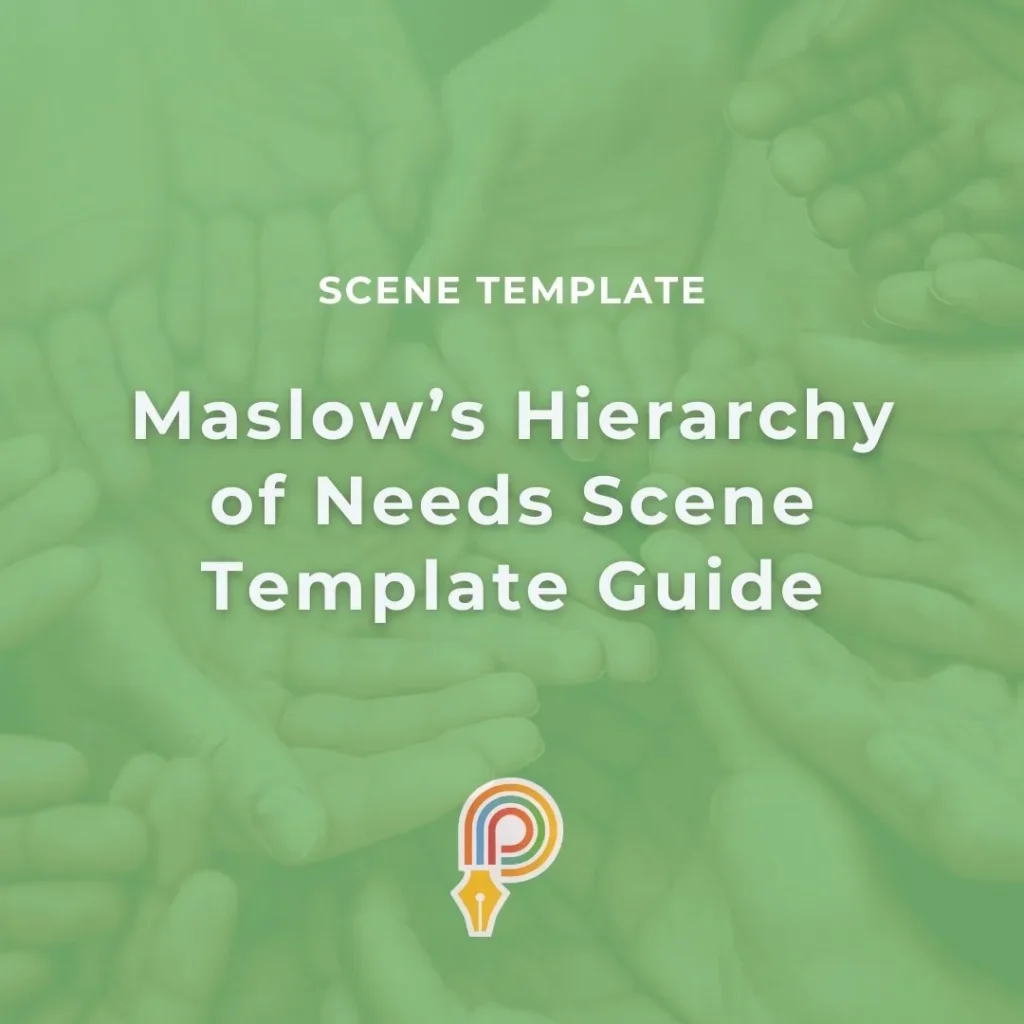





Comments